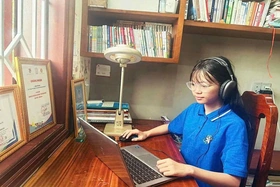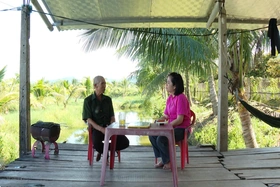KGYgXeG6q2o4cXFAW+G7n1JncmpkW11xcndqZEBbazhw4buFZ2wmXSJnbD9dazhw4buFZ2wt4bqpbXJybWsmXTsiIiIg4bufcj9bKShxcnBtbOG7hSnhu7dqal1wZHFtc3DhuqtkcV1sZGRiZGJdcm1dcXPhu5/hu59tcHJd4bufZG3hu59qZF3hu69ncmZdYmdxOOG6qWdqZ3JnZHEoL3FycG1s4buFKSgvZiApKOG7n13huqtqOHFxQFvhu59GZDhiW11xcndqZEBbazhw4buFZ2wmXSJnbD9dazhw4buFZ2wt4bqpbXJybWsmXTsiIiIg4bufcj9bKShkaynhu65ncmZdcmZkXeKAnFJt4buFZHJmZHBd4buuZF3huqo4bOKAnV3hu59wbeG7iWThuqtyOl1rOGx3XeG7n2Rt4bufamRd4buvZ3JmXWJncTjhuqlnamdyZ2RxXWdsXeG7oHM4bOG7hV1ScGdd4buecG3hu61nbOG6q2RdZjjhu61kXWRs4buJbXdkYl04XeG6qWRycmRwXWpn4buDZDtdUnA4bF1SZmddUmY4bGZdUm04bDpd4bufcG3hu4VwOGtdazhsOOG7hWRwXeG7g21wXXJmZF3huqpkbHJwOGpd4bqqbThxcjhqXVBk4buFZ21sXXNsYmRwXXJmZF3huqpkbHJkcF3hu4NtcF1Rc3FyOGdsOOG6qWpkXVBzcDhqXUJk4butZGpt4bufa2Rscl0uUVBCITpdceG7n2Q4xKlxXXJtXeG7oHM4bOG7hV1ScGddLuG7oHM4bOG7hV1ScGddTGThu69x4bufOOG7n2RwIV044bqpbXNyXWZt4buvXXJmZF3hu59wbeG7iWThuqtyXWY4cV3huqlkbGThu4NncmRiXWpt4bqrOGpd4bufZG3hu59qZF3hu69ncmZdYmdxOOG6qWdqZ3JnZHE7KC9kaykoL+G7nyko4bufXeG6q2o4cXFAW+G7n+G6qG1id1spKGdr4buFXXFw4bqrQFtmcnLhu59xJi8v4bqrO+G6qTht4buhczhs4buFcnBnO+G7rWwvYmRxxKlybeG7ny9sZOG7r3EvMDEzIC8gIDJiMyA2MTUxNHIxMyA3aiAt4buhczhs4buFLWZnZOG7ny1mc3ctYm1s4buFO+G7r2Thuqnhu59bXThqckBb4bu3ampdcGRxbXNw4bqrZHFdbGRkYmRiXXJtXXFz4buf4bufbXByXeG7n2Rt4bufamRd4buvZ3JmXWJncTjhuqlnamdyZ2RxW10vKSgv4bufKSjhu59d4bqrajhxcUBb4bufR2xyZHBSZ3JqZFtdcXJ3amRAW2s4cOG7hWdsJl0iZ2w/XWs4cOG7hWdsLeG6qW1ycm1rJl07IiIiIOG7n3I/WylKZDjhu61kXWxtXW1sZF3huqlkZmdsYigv4bufKSjhu59d4bqrajhxcUBb4buf4bugc2RxcmdtbFtdcXJ3amRAW2s4cOG7hWdsJl0iZ2w/XWs4cOG7hWdsLeG6qW1ycm1rJl07IiIiIOG7n3I/WykocXJwbWzhu4Up4bqqbXNqYl13bXNd4bqpcGdk4buDanddZ2xycG1ic+G6q2RdcmZkXVFQQl04bGJdcmZkXeKAnFJt4buFZHJmZHBd4buuZF3huqo4bOKAnV3hu59wbeG7iWThuqtyKigvcXJwbWzhu4UpKC/hu58pKOG7n13huqtqOHFxQFvhu5/hu7dsceG7r2RwW11xcndqZEBbazhw4buFZ2wmXSJnbD9dazhw4buFZ2wt4bqpbXJybWsmXTsiIiIg4bufcj9bKVJmZF3igJxSbeG7hWRyZmRwXeG7rmRd4bqqOGzigJ1d4bufcG3hu4lk4bqrcjpdceG7n21scW1wZGJd4bqpd13huqo4cGdyOHFd4bu3c3FycDhqZzhdcmZwbXPhu4VmXVFQQjpdZ3Fdc2xiZHDhu684d13hu4NwbWtd4buIc2p3XTAiMDBdcm1d4buIc2xkXTAiMDU7XUpt4bqrOGpd4bufOHBybGRwcV1t4buDXXJmZF3hu59wbeG7iWThuqtyXWY44butZF3huqlkZGxdcmZkXeG7hW3hu61kcGxrZGxycV1t4buDXVJwZ2RzXeG7nmZtbOG7hV1CZ3FycGfhuqtyXThsYl1yZnBkZF3huqtta2tzbGRxXW3hu4NdUnBnZHNdUmY4bGY6XVJwZ2RzXVJmczhsXThsYl1ScGdkc11SOGdd4buDbXBdcmZkXeG7g2dwcXJdcuG7r20td2Q4cF1xcjjhu4VkO11HbF1yZmRdajhyZHBdcXI44buFZDpd4buvZF3hu59qOGxdcm1d4bqrbW3hu59kcDhyZF3hu69ncmZdUnBnZHNdQjhnXThsYl1ScGdkc11ScHNs4buFXeG6q21ra3NsZHE7KC/hu58pKOG7n13huqtqOHFxQFvhu5/hu7dsceG7r2RwW11xcndqZEBbazhw4buFZ2wmXSJnbD9dazhw4buFZ2wt4bqpbXJybWsmXTsiIiIg4bufcj9bKeG7rmRdZHbhu59k4bqrcl1ybV1iZGpn4butZHBdbXNy4bqrbWtkcV3hu4NtcF1rbXBkXXJmOGxdIDoiIiJdOGJzanJxXThsYl3hu59kbeG7n2pkXeG7r2dyZl1iZ3E44bqpZ2pncmdkcV04bGJdcmZkZ3Bd4buDOGtnamdkcTpdcjhw4buFZHJnbOG7hV1ybV3hu59wbeG7rWdiZF1yZmRrXeG7r2dyZl04bF1nbGJk4bufZGxiZGxyOl1xZGrhu4MtcGRqZzhscjpdOGxiXXBn4buFZnLhu4Nzal1qZ+G7g2Rd4buvZ3JmXXFt4bqrZzhqXWThu6FzOGpncnc7XVJtXTjhuqtmZ2Thu61kXXJmZHFkXXI4cOG7hWRycTpdcmZkXeG7n3Bt4buJZOG6q3Jd4oCcUm3hu4VkcmZkcF3hu65kXeG6qjhs4oCdXeG6q21s4bqrZGxycDhyZHFdbWxd4buFZ+G7rWds4buFXXJmZF1qbeG6qzhqcV04XXE44buDZF1qZ+G7rWds4buFXWRs4butZ3BtbGtkbHI6XWdr4bufcG3hu61nbOG7hV3hu69kamot4bqpZGds4buFXThsYl1k4bqrbWxta2fhuqtdcXI4cnNxOl1wOGdxZ2zhu4Vd4bufZndxZ+G6qzhqXXFyOGxiOHBicTpdOGxiXWRr4bufbeG7r2RwZ2zhu4Vd4bufZG3hu59qZF3hu69ncmZdYmdxOOG6qWdqZ3JnZHE7KC/hu58pKOG7n13huqtqOHFxQFvhu5/hu6BzZHFyZ21sW11xcndqZEBbazhw4buFZ2wmXSJnbD9dazhw4buFZ2wt4bqpbXJybWsmXTsiIiIg4bufcj9bKShxcnBtbOG7hSnhu65md11iZ2JdcmZkXVFQQl3huqpkbHJkcF1qOHNs4bqrZl1yZmRd4oCcUm3hu4VkcmZkcF3hu65kXeG6qjhs4oCdXeG7n3Bt4buJZOG6q3JdZ2xd4bugczhs4buFXVJwZ13hu55wbeG7rWds4bqrZCooL3FycG1s4buFKSgv4bufKSjhu59d4bqrajhxcUBb4buf4bu3bHHhu69kcFtdcXJ3amRAW2s4cOG7hWdsJl0iZ2w/XWs4cOG7hWdsLeG6qW1ycm1rJl07IiIiIOG7n3I/Wynhu55wbeG7rWdxZ21sXW3hu4NdcXPhu5/hu59tcHJd4buDbXBd4bufZG3hu59qZF3hu69ncmZdYmdxOOG6qWdqZ3JnZHE6XeG7n3BtcmThuqtyZ21sXW3hu4Nd4bqrZmdqYnBkbDpdOGxiXeG7hWRsYmRwXWThu6FzOGpncnddOHBkXXJmcGRkXW3hu4NdbXNwXWs44buJbXBdOOG6q3Jn4butZ3JnZHE7XeG7gnBta10wIiAwLTAiMDA6XeG7r2Rd4bqrbS3hu69tcMSpZGJd4buvZ3JmXeG7hGdtXUpnbGZdQmdxcnBn4bqrcl3hu55kbeG7n2pk4oCZcV3huqpta2tncnJkZF1ybV3huqttbGJz4bqrcl1yZmRd4bufcG3hu4lk4bqrcl3igJxEa+G7n23hu69kcGds4buFXeG7n2Rt4bufamRd4buvZ3JmXWJncTjhuqlnamdyZ2Rx4oCdXWdsXSAiXeG6q21ra3NsZHFd4buDbXBda21wZF1yZjhsXTA6IiIiXeG6qWRsZOG7g2fhuqtnOHBnZHE7KC/hu58pKOG7n13huqtqOHFxQFvhu5/hu7dsceG7r2RwW11xcndqZEBbazhw4buFZ2wmXSJnbD9dazhw4buFZ2wt4bqpbXJybWsmXTsiIiIg4bufcj9bKVJmcG1z4buFZl1mOHBiXWThu4Phu4NtcHJxOl1yZmRd4bufcG3hu4lk4bqrcl3hu684cV3hu69kamotcGThuqtkZ+G7rWRiXThsYl1mZ+G7hWZqd13hu604anNkYl3huql3XXJmZF1x4bufbWxxbXBdOGxiXXBkajhyZGJd4bufOHByZ2RxOl04bGJd4buvZF3hu69kcGRdcGThuqtta2tkbGJkYl1ybV1qOHNs4bqrZl1xZ2tnajhwXeG7n3Bt4buJZOG6q3JxXWdsXW1yZmRwXThwZDhxXW3hu4NdcmZkXeG7n3Bt4butZ2zhuqtkOygv4bufKSjhu59d4bqrajhxcUBb4buf4bugc2RxcmdtbFtdcXJ3amRAW2s4cOG7hWdsJl0iZ2w/XWs4cOG7hWdsLeG6qW1ycm1rJl07IiIiIOG7n3I/WykocXJwbWzhu4UpRm3hu69dYm1kcV1yZmRd4bufcG3hu4lk4bqrcl1iZ+G7g+G7g2RwXeG7g3Bta11tcmZkcF1tbOG7hW1nbOG7hV3hu59wbeG7iWThuqtycV1nbF3hu6BzOGzhu4VdUnBnXeG7nnBt4butZ2zhuqtkKigvcXJwbWzhu4UpKC/hu58pKOG7n13huqtqOHFxQFvhu5/hu7dsceG7r2RwW11xcndqZEBbazhw4buFZ2wmXSJnbD9dazhw4buFZ2wt4bqpbXJybWsmXTsiIiIg4bufcj9bKeG7rmRd4bqrbWxyOOG6q3JkYl1yZmRdam3huqs4anFdcm1d4bqrbWpqZOG6q3Jd4buFZGxkcDhqXThsYl1nbHFn4buFZnLhu4Nzal1nbOG7g21wazhyZ21sXWJzcGds4buFXXJmZF3hu59wbeG7iWThuqty4oCZcV3hu4NkOHFn4bqpZ2pncnddcXJzYmdkcV1nbF3hu4hzbGRdOGxiXeG7iHNqd10wIjAwO11Nc3BdOOG7n+G7n3BtOOG6q2Y6XeG7r2Zn4bqrZl3hu684cV3hu6FzZ3JkXWJn4buD4buDZHBkbHJd4buDcG1rXW1yZmRwXeG7n3Bt4buJZOG6q3JxOl1kbDjhuqlqZGJdcmZka11ybV3hu4ltZ2xdc3FdZ2xdcmZkXeG7g2dwcXJd4bufajjhuqtkOygv4bufKSjhu59d4bqrajhxcUBb4buf4bu3bHHhu69kcFtdcXJ3amRAW2s4cOG7hWdsJl0iZ2w/XWs4cOG7hWdsLeG6qW1ycm1rJl07IiIiIOG7n3I/WylSZmRrZGJd4oCcUm3hu4VkcmZkcF3hu69kXeG6qzhs4oCdOl1yZmRd4bufZG3hu59qZF3huqs4bF1iZHFn4buFbF1yZmRd4bufcG3hu4lk4bqrcjpdYmdx4bqrc3FxXWR2Z3FyZ2zhu4VdZ3Fxc2RxXeG7r2dyZl1yZmRd4bufcG3hu4lk4bqrcl1rOGw44buFZGtkbHJdcmQ4azpdazjEqWRdOGxiXWR2ZOG6q3NyZF044bqrcmdtbF3hu59qOGxxOl04bGJda21sZ3JtcF04bGJdcGThu61nZOG7r11yZmRdOOG6q3Jn4butZ3JnZHFdcm3hu4VkcmZkcDsoL+G7nyko4bufXeG6q2o4cXFAW+G7n+G7oHNkcXJnbWxbXXFyd2pkQFtrOHDhu4VnbCZdImdsP11rOHDhu4VnbC3huqltcnJtayZdOyIiIiDhu59yP1spKHFycG1s4buFKeG7rmY4cl04cGRdcmZkXeG7n21xZ3Jn4butZF1tc3Lhuqtta2RxXXJmOHJdcmZkXeG7n3Bt4buJZOG6q3JdZjhxXWJkamfhu61kcGRiXTjhu4NyZHBdbWxkXXdkOHAqKC9xcnBtbOG7hSkoL+G7nyko4bufXeG6q2o4cXFAW+G7n+G7t2xx4buvZHBbXXFyd2pkQFtrOHDhu4VnbCZdImdsP11rOHDhu4VnbC3huqltcnJtayZdOyIiIiDhu59yP1sp4bqoOHFkYl1tbF1tc3BdOOG7n+G7n3BtOOG6q2Y6XWpt4bqrOGpd4bufZG3hu59qZF3hu69ncmZdYmdxOOG6qWdqZ3JnZHFdOGxiXXJmZF3huqtta2tzbGdyd11mOOG7rWRdcjjEqWRsXeG7n3BtOOG6q3Jn4butZF044bqrcmdtbHE7XVJt4buFZHJmZHA6XXJmZHddYmThuqtnYmRd4buvZjhyXThsYl1mbeG7r11ybV1ibV04bGJdazh2Z2tnemRdcmZkZ3BdcGRxbXNw4bqrZHFd4buvZ3JmXThd4bufbXFncmfhu61kXThycmdyc2JkXXJtXeG7n3BtYnPhuqtkXXJmZF3huqlkcXJdbXNy4bufc3JxXeG7g21wXXJmZF3hu4NzcnNwZDsoL+G7nyko4bufXeG6q2o4cXFAW+G7n+G7t2xx4buvZHBbXXFyd2pkQFtrOHDhu4VnbCZdImdsP11rOHDhu4VnbC3huqltcnJtayZdOyIiIiDhu59yP1sp4bu34buDcmRwXThdd2Q4cDpdcmZkXeG7n3Bt4buJZOG6q3Jd4oCcUm3hu4VkcmZkcF3hu65kXeG6qjhs4oCdXWY4cV1mZGrhu59kYl3hu4NnbGJdcmZwZGRd4bqranPhuqlxXeG7g21wXWttcGRdcmY4bF0wIiJd4bufZG3hu59qZF3hu69ncmZdYmdxOOG6qWdqZ3JnZHFdOGxiXXJmZGdwXeG7gzhrZ2p3XWtka+G6qWRwcTtd4buuZ3JmXXJmZF04cXFncXI4bOG6q2RdbeG7g11yZmRd4bufcG3hu4lk4bqrcjpdIDdd4buDOGtnamdkcV1mOOG7rWRdZjhiXXJmZGdwXWZta2RxXXBk4bqrbWxxcnBz4bqrcmRiXThsYl1kbGY4bOG6q2RiOl0gMyJd4buDOGtnamdkcV1mOOG7rWRd4bqrbWvhu59qZHJkYl1ycDhnbGds4buFXW1sXeG7n3Bk4butZGxyZ2zhu4VdOGxiXWtnbGdrZ3pnbOG7hV1yZmRdcGdxxKlxXeG6qXBtc+G7hWZyXeG6qXddbDhyc3A4al1iZ3E4cXJkcHE6XThsYl0gIDRd4buDOGtnamdkcV1mOOG7rWRdcGThuqtkZ+G7rWRiXXBk4buFc2o4cF1mbWtkXWZkOGpyZuG6qzhwZF1xZHDhu61n4bqrZHE7XeG7rmRdZjjhu61kXThqcW1dcWRyXXPhu59dcuG7r21d4bqrajhxcWRxXeG7g21wXeG6q2ZnamJwZGxd4buvZ3JmXWJncTjhuqlnamdyZ2RxXThsYl1yZnBkZF1yZDhrcV3hu69mbV1mOOG7rWRd4buhczhqZ+G7g2dkYl3hu4NwbWtd4buDZ3Bxci04Z2JdcnA4Z2xnbOG7hV1ybV3hu59wbeG7rWdiZF1xc+G7n+G7n21wcl1ic3BnbOG7hV1sOHJzcDhqXWJncThxcmRwcTtdR2xdOGJiZ3JnbWw6XeG7r2RdZjjhu61kXThxcWdxcmRiXTAxXXdtc2zhu4VdZjhsYmfhuqs44buf4bufZGJd4bufZG3hu59qZF04bGJdMjFd4buDOGtnamdkcV1nbF1qZDhwbGds4buFXXHEqWdqanFdOGxiXXFyOHByZ2zhu4VdcmZkZ3Bd4bqpc3FnbGRxcWRxOl1tcOG7hThsZ3pkYl1ycDhnbGds4buFXeG6q21zcHFkcV3hu4NtcF1mc2xicGRicV1t4buDXThic2pycV04bGJd4bqrZmdqYnBkbF1tbF3huqtmZ2piXeG7n3BtcmThuqtyZ21sXThsYl3hu59wZOG7rWRscmdtbF1t4buDXTjhuqvhuqtnYmRscnFdOGxiXTjhuqlzcWRxOl04bGJd4buFZ+G7rWRsXXHhu69na2tnbOG7hV3huqtqOHFxZHFdcm1dcW1rZF0yIl1xcnNiZGxycTsoL+G7nyko4bufXeG6q2o4cXFAW+G7n+G7t2xx4buvZHBbXXFyd2pkQFtrOHDhu4VnbCZdImdsP11rOHDhu4VnbC3huqltcnJtayZdOyIiIiDhu59yP1spSzhsd13hu59kbeG7n2pkXeG7r2dyZl1iZ3E44bqpZ2pncmdkcV1mOOG7rWRd4bqpZOG6q21rZF1rbXBkXW3hu59kbF04bGJd4bufbXFncmfhu61kXXJtXXJmZF3huqtta2tzbGdydztdUmZkd11mOOG7rWRdcmZkXTjhuqvhuqtkcXFn4bqpZ2pncnddcm1dc3FkXThsYl1rOGw44buFZF1yZmRdcGRxbXNw4bqrZHFdZ2xdOF3huqlkcnJkcF3hu684d104bGJdcWY4cGRdcmZkZ3BdZHbhu59kcGdkbOG6q2RxXeG7r2dyZl1tcmZkcHE7KC/hu58pKOG7n13huqtqOHFxQFvhu5/huqhtYndbKShna+G7hV3huqtqOHFxQFtn4bqqZGxyZHBdYnJmc2vhuqlbXXFw4bqrQFtmcnLhu59xJi8v4bqrO+G6qTht4buhczhs4buFcnBnO+G7rWwvYmRxxKlybeG7ny9sZOG7r3EvMDEzIC8gIDJiMyA2MTUzN3IgMTc2ajEt4buhczhs4buFLWZnZOG7ny1mc3ctYm1s4buFO+G7r2Thuqnhu59bXThqckBb4bu3ampdcGRxbXNw4bqrZHFdbGRkYmRiXXJtXXFz4buf4bufbXByXeG7n2Rt4bufamRd4buvZ3JmXWJncTjhuqlnamdyZ2RxW10vKSgv4bufKSjhu59d4bqrajhxcUBb4buf4bqqOOG7n3JnbWxbKeG7nmRt4bufamRd4buvZ3JmXWJncTjhuqlnamdyZ2RxXeG7nzhwcjjEqWRdZ2xdOF1ycDhnbGds4buFXeG6q21zcHFkXXNsYmRwXXJmZF3hu59wbeG7iWThuqtyXeKAnFJt4buFZHJmZHBd4buvZF3huqs4bOKAnTtd4bueZm1ybSZdUjtKKC/hu58pKOG7n13huqtqOHFxQFvhu59HbHJkcFJncmpkW11xcndqZEBbazhw4buFZ2wmXSJnbD9dazhw4buFZ2wt4bqpbXJybWsmXTsiIiIg4bufcj9bKeG7t11xOOG7g2Rdamfhu61nbOG7hV1kbOG7rWdwbWxrZGxyXeG7g21wXXJmZF1iZ3E44bqpamRiKC/hu58pKOG7n13huqtqOHFxQFvhu5/hu6BzZHFyZ21sW11xcndqZEBbazhw4buFZ2wmXSJnbD9dazhw4buFZ2wt4bqpbXJybWsmXTsiIiIg4bufcj9bKShxcnBtbOG7hSlNbGRdbeG7g11yZmRdZHbhu59k4bqrcmRiXThsYl1rbXFyXeG6q2Y4ampkbOG7hWds4buFXeG7hW04anFdbeG7g11yZmRd4oCcUm3hu4VkcmZkcF3hu65kXeG6qjhs4oCdXeG7n3Bt4buJZOG6q3JdZ3Fdcm1d4bqpc2dqYl04XXE44buDZF1qZ+G7rWds4buFXWRs4butZ3BtbGtkbHJd4buDbXBd4bufZG3hu59qZF3hu69ncmZdYmdxOOG6qWdqZ3JnZHE7XUZt4buvXWY44butZF13bXNd4bufZHDhu4NtcGtkYl1ybV044bqrZmdk4butZF1nciooL3FycG1s4buFKSgv4bufKSjhu59d4bqrajhxcUBb4buf4bu3bHHhu69kcFtdcXJ3amRAW2s4cOG7hWdsJl0iZ2w/XWs4cOG7hWdsLeG6qW1ycm1rJl07IiIiIOG7n3I/WylSZmRd4bufcG3hu4lk4bqrcl3igJxSbeG7hWRyZmRwXeG7rmRd4bqqOGzigJ1dZ3Fd4bqpOHFkYl1tbF1yZmRdam3huqs4al04cGQ4XeG7r2ZkcGRdcmZkcGRdOHBkXWZn4buFZl3huqtmOGzhuqtkcV1t4buDXTjhuqvhuqtnYmRscnE6XeG6q2ZnamJdOOG6qXNxZDpdOGxiXWY4cDhxcWtkbHI7XVJtXWs4xKlkXXFzcGRd4bufZG3hu59qZF3hu69ncmZdYmdxOOG6qWdqZ3JnZHFdZGzhu4ltd104XXE44buDZF1qZ+G7g2Q6XeG7r2RdZjjhu61kXWY4Yl1rc2pyZ+G7n2pkXTjhuqtyZ+G7rWdyZ2RxXXJtXeG6q21ra3NsZ+G6qzhyZF04bGJdZGJz4bqrOHJkXWpt4bqrOGpd4bufZG3hu59qZF1ybV1wOGdxZF1yZmRncF044buvOHBkbGRxcV044bqpbXNyXeG6q2ZnamJd4bufcG1yZOG6q3JnbWw6XW1w4buFOGxnemRiXXHhu69na2tnbOG7hV3huqtqOHFxZHFd4buDbXBd4bqrZmdqYnBkbDpdOHFxZ3FyZGJdam3huqs4al3hu59kbeG7n2pkXWdsXTjhuqvhu6FzZ3BnbOG7hV1sZOG6q2RxcThwd13hu4NncHFyLThnYl04bGJdZGtkcOG7hWRs4bqrd11xxKlnampxXXJtXXBkceG7n21sYl1ybV044bqr4bqrZ2JkbHJxXThsYl1sOHJzcDhqXWJncThxcmRwcTpdOGxiXWdscXI4ampkYl1xZ+G7hWxxXThyXWZn4buFZmp3LWI4bOG7hWRwbXNxXWpt4bqrOHJnbWxxO13hu65kXTjhuqvEqWxt4buvamRi4buFZF1yZjhyXXJtXTjhuqtmZ2Thu61kXXJmZF3hu4VtOGpxOl3hu69kXWxkZGJd4buJbWdscl1k4buD4buDbXBycV3hu4NwbWtdam3huqs4al04c3JmbXBncmdkcV04bGJd4bufZG3hu59qZDpd4buvZmfhuqtmXWdxXXJmZF1xbXNw4bqrZF1t4buDXeG7n23hu69kcF1ybV1icGfhu61kXW1zcF3hu59wbeG7iWThuqtyXeG7g21w4buvOHBiXThsYl044bqrZmdk4butZF1yZmRdZHbhu59k4bqrcmRiXXBkcXNqcnE7KC/hu58pKOG7n13huqtqOHFxQFvhu5/hu6BzZHFyZ21sW11xcndqZEBbazhw4buFZ2wmXSJnbD9dazhw4buFZ2wt4bqpbXJybWsmXTsiIiIg4bufcj9bKShxcnBtbOG7hSnhu65mOHJdOHBkXXJmZF1iZ+G7g+G7g2fhuqtzanJnZHFdZ2xdYmThu61kam3hu59nbOG7hV04XXE44buDZF1qZ+G7rWds4buFXWRs4butZ3BtbGtkbHJd4buDbXBd4bufZG3hu59qZF3hu69ncmZdYmdxOOG6qWdqZ3JnZHFd4buDcG1rXXdtc3Bd4bufZHBx4bufZOG6q3Jn4butZCooL3FycG1s4buFKSgv4bufKSjhu59d4bqrajhxcUBb4buf4bu3bHHhu69kcFtdcXJ3amRAW2s4cOG7hWdsJl0iZ2w/XWs4cOG7hWdsLeG6qW1ycm1rJl07IiIiIOG7n3I/Wynhu55wOOG6q3Jn4bqrOGpqdzpdYmfhu4Phu4NkcGRscl1mOGxiZ+G6qzjhu5/hu59kYl3hu59kbeG7n2pkXXBk4buhc2dwZF1iZ+G7g+G7g2RwZGxyXXJwOGdsZ2zhu4VdOGxiXThxcWdxcjhs4bqrZF1iZOG7n2RsYmds4buFXW1sXXJmZGdwXWpn4butZ2zhu4Vd4bqrbWxiZ3JnbWxxOl3hu4M4a2dqZ2RxOl04bGJdamThu61kanFdbeG7g11iZ3E44bqpZ2pncnc7XeG7gm1wXWdscXI4bOG6q2Q6XWs4bHdda3Nxcl3huqlkXWttcGRd4bqrbWzhu4NnYmRscl1ybV3huqlqZGxiXWdscm1dcW3huqtnOGpdamfhu4NkXThsYl1wZOG6q2Rn4butZF3hu59wbeG7n2RwXWds4buDbXBrOHJnbWw7XVFta2Rd4bufOHBkbHJxXThwZF1ybW1d4bufcG1yZOG6q3Jn4butZDpd4buvZmfhuqtmXWs4xKlkcV1yZmRncF3huqtmZ2picGRsXeG7rXNqbGRwOOG6qWpkXXJtXWR2cmRwbDhqXeG7gzjhuqtybXBxO11LZDhs4buvZmdqZDpdbG1yXThqal1mOGxiZ+G6qzjhu5/hu59kYl3huqtmZ2picGRsXeG6qzhsXXHhu69na11xOOG7g2Rqd104bGJdcmZkXXBkcW1zcOG6q2RxXThwZF1qZ2tncmRiOzs7XeG7rmRdxKlsbeG7r104ampdcmZkcWRdYmfhu4Phu4Nn4bqrc2pyZ2RxXThsYl04cGRdcnB3Z2zhu4Vdcm1dcGRxbWrhu61kXXJmZF1ncXFzZHFdcmZwbXPhu4VmXW1zcF3hu59wbeG7iWThuqtyXTjhuqtyZ+G7rWdyZ2RxOygv4bufKSjhu59d4bqrajhxcUBb4buf4bugc2RxcmdtbFtdcXJ3amRAW2s4cOG7hWdsJl0iZ2w/XWs4cOG7hWdsLeG6qW1ycm1rJl07IiIiIOG7n3I/WykocXJwbWzhu4Up4buuZjhyXXFtanNyZ21scV3hu69nampdcmZkXVFQQl3huqpkbHJkcF04bGJdcmZkXeG7n3Bt4buJZOG6q3JdOGJt4bufcl1ybV1iZOG7rWRqbeG7n104XXE44buDZF1kbOG7rWdwbWxrZGxyXeG7g21wXWJncTjhuqlqZGJd4bufZG3hu59qZF04bGJdOOG6q2ZnZOG7rWRdcmZkXWR24bufZOG6q3JkYl1tc3Lhuqtta2RxKigvcXJwbWzhu4UpKC/hu58pKOG7n13huqtqOHFxQFvhu5/hu7dsceG7r2RwW11xcndqZEBbazhw4buFZ2wmXSJnbD9dazhw4buFZ2wt4bqpbXJybWsmXTsiIiIg4bufcj9bKUdsXXJmZF3hu59wbeG7iWThuqtyXeKAnFJt4buFZHJmZHBd4buuZF3huqo4bOKAnTpdcmZkXeG7n3Bt4buJZOG6q3JdazhsOOG7hWRrZGxyXXJkOGtdOGxiXXBkajhyZGJd4bufOHByZ2RxXeG6q21sYnPhuqtyXXBk4buFc2o4cF1wZOG7rWdk4buvcV1ybV1k4butOGpzOHJkXXJmZF044bqr4bqrbWvhu59qZ3FmZGJdOOG6q3Jn4butZ3JnZHFdOGxiXWJk4butZGpt4bufXTjhuqtyZ21sXeG7n2o4bHFd4buDbXBdcmZkXeG7g21qam3hu69nbOG7hV3hu59kcGdtYnE7XeG7rmRd4buvZ2pqXeG6q21scmdsc2RdbXNwXWThu4Phu4Nk4bqrcmfhu61kXTjhuqtycTpdcXPhuqtmXThxXWdscXI4ampnbOG7hV3hu684cGxnbOG7hV1xZ+G7hWxxXWdsXWZn4buFZmp3XWI4bOG7hWRwbXNxXThwZDhxO13hu65kXThqcW1dcmQ44bqrZl1qbeG6qzhqXXFyc2JkbHJxXXJtXXHhu69na11xOOG7g2Rqdzpd4bufcGThu61kbHJdOOG6q+G6q2diZGxycV04bGJdZ2zhu4lzcGdkcTpdOGxiXWJtXeG7g2dwcXItOGdiXeG6qThxZ+G6q3E7XU1zcF3hu59wbeG7iWThuqtyXeG7r2dqal04anFtXWs4Z2xyOGdsXThsYl1kduG7nzhsYl1x4bufZOG6q2c4al3huqtqOHFxZHFd4buDbXBdYmdxOOG6qWpkYl1xcnNiZGxycTpdbXDhu4U4bGd6ZF1ycDhnbGds4buFXeG6q21zcHFkcV1ybV1nbHJkbHFn4buDd11qbeG6qzhqXTjhu684cGRsZHFxXTjhuqltc3Jd4bqrZmdqYl3hu59wbXJk4bqrcmdtbF04bGJd4bqrbWtrc2xncnct4bqpOHFkYl1iZ3E4cXJkcF3hu59wZOG7rWRscmdtbDpdOGxiXeG7r21wxKld4buvZ3JmXXBkajhyZGJd4bufOHByZ2RxXXJtXWdscmThu4VwOHJkXeG7n3Bt4buJZOG6q3JdOOG6q3Jn4butZ3JnZHFdZ2xybV1tcmZkcF1qbeG6qzhqXeG7n3Bt4buFcDhrcTsoL+G7nyko4bufXeG6q2o4cXFAW+G7n+G7oHNkcXJnbWxbXXFyd2pkQFtrOHDhu4VnbCZdImdsP11rOHDhu4VnbC3huqltcnJtayZdOyIiIiDhu59yP1spKHFycG1s4buFKVJmOGzEqV13bXNd4buDbXBdd21zcF1yZ2tkLCgvcXJwbWzhu4UpKC/hu58pKOG7n13huqtqOHFxQFvhu5/hu7dzcmZtcFtdcXJ3amRAW2s4cOG7hWdsJl0iZ2w/XWs4cOG7hWdsLeG6qW1ycm1rJl07IiIiIOG7n3I/Wynhu6BzOGzhu4VdRmdk4bufXeKAk11Gc3dd4bu3bGYoL+G7nyk=
Quang Hiep – Huy Anh

{head}
Other news

QTO - Not letting summer slip by in vain, many students in Quang Tri have taken the initiative to teach English to younger children. Through each lesson,...

QTO - Returning from the northern border front with a 2/4 disability, it seemed his journey of service had come to an end. Yet, this wounded soldier began...

